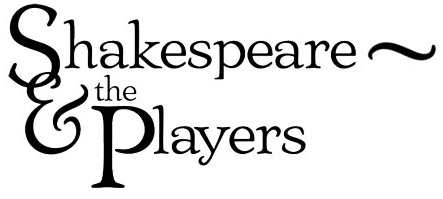Since its inception, Shakespeare and the Players has been committed to its mission to promote and enhance scholarship and teaching in a variety of areas. The postcard collection has been used over the years to supplement instruction in the fields of Literature, History, Rhetoric and Composition, Art History, and more.
COMPOSITION COURSES
The postcard collection can be useful in first year writing courses as students have written reflectively about how the distribution of the postcards may have affected how audiences a century later experience Shakespeare. At Emory, our First Year Writing program allows graduate student instructors the chance to create course themes and build writing courses around key writing concepts such as audience, genre, rhetorical situation, discourse community, and conversation. Courses on the rhetoric of images, on voyeurism, on disability representations, and on re-writing Shakespeare have all utilized the postcard collection in different ways. Students may be asked to:
- Reflect on the audiences of the postcards then (when they were produced) compared to now;
- Write about the genre of postcard as a mode of communication anticipating the genres of text messaging and social media today;
- Analyze themselves as actors in the process of interpretation as they gaze or stare at the images a century later.
LITERATURE, THEATER, HISTORY COURSES
The postcards in the collection have been used in classrooms across the disciplines and we want to continue to encourage new ways of incorporating this site into dynamic instruction:
- Literature courses to talk about notions of race, of gender, and of disability, particularly in how they intersect in Shakespeare’s work;
- Theater Studies courses have used the collection in thinking through stage design (particularly in the work of Sir Herbert Beerbohm Tree), costuming, and Shakespeare in performance.
- Business courses might conduct analyses of the postcards as advertisements for shows;
- History courses have utilized the postcard collection in a myriad of ways by looking at the history of the theater in London and New York, of these postcards and the images as representations of their historical moments, and so much more;
- Art History courses may discuss the materiality of the postcards and the history of photography. Curators can design exhibits around the postcards in the collection.
IMAGE DESCRIPTIONS
Instructors and students may utilize the postcard collection, and the site itself in a variety of ways. In the past, students have worked to provide descriptions of the postcard images as a well as transcriptions of the handwriting on the backs of many of them. The process of describing images, as many will notice, presents a unique set of challenges for students and researchers alike. One must negotiate between current descriptors of items in the image versus descriptors in use at the time. This is particularly challenging for scholars describing images of such figures as Matheson Lang or E. Harcourt Williams, who both play the role of Othello with their faces painted in black makeup. Likewise, one may find it difficult to describe certain poses and costuming particulars, and to determine how much description is too much, when one is not familiar with the staging traditions of the period. But then again, describing the images in a language familiar to us in the 21st Century may have its own merits as well. For more information about how image descriptions and alternative benefits everyone, and how you can add your own, please read more here.
RESEARCH WITH US
Dr. Harry Rusche’s original digital project has long been admired as a pioneering work of digital scholarship and been referenced many times in such titles as:
Michael Best, “Shakespeare on the Internet and in Digital Media” The Edinburgh Companion to Shakespeare and the Arts, Eds. Mark Thornton Burnett, Adrian Streete, and Ramona Wray, Edinburgh: Edinburgh UP, 2011. 558-76.
Michael Best, “Shakespeare and the Electronic Text,” A Concise Companion to Shakespeare and the Text, Ed. Andrew Murphy, West Sussex, UK: Wiley-Blackwell, 2010. 145-64.
Marc Shell, Talking the Walk and Walking the Talk: A Rhetoric of Rhythm, New York: Fordham UP. 2015.
Dieter Mehl, “Shakespeare Reference Books,” The Cambridge Companion to Shakespeare, Eds. Margreta de Grazia and Stanley Wells, Cambridge: Cambridge UP, 2001. 297-314.
Sheila T. Cavanagh and Kevin A. Quarmby, “‘The World Together Joins:’ Electronic Shakespearean Collaborations,” The Shakespearean International Yearbook, Vol. 14: Special Section, Digital Shakespeares, Burlington, VT: Ashgate, 2014. 117-32.
CONTACT US
Also, please let us know by sending us a note about how you’ve used or would like to use Shakespeare and the Players in your research and teaching.
We would love for you to use our images for your teaching and research. Please make sure you read our policy about using and documenting the images on the site.
The postcard images to the right feature (a) Phyllis Neilson-Terry as Juliet in a production of Romeo and Juliet, and (2) Ella Thornton, Miss Darragh, and Phyllis Relph in Antony and Cleopatra.
